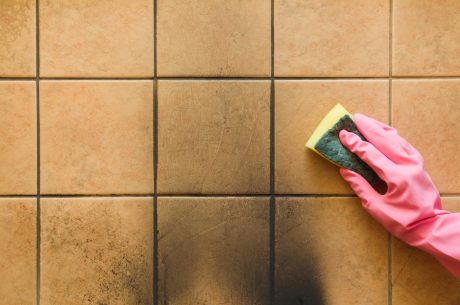Table of Contents

Plumbing leaks are more than just a nuisance; they can be a serious threat to your home’s structure and indoor air quality. One of the most concerning consequences of hidden or neglected plumbing leaks is mold growth. Understanding the connection between plumbing leaks and mold, along with preventive measures, can help protect your home and health.
How Plumbing Leaks Lead to Mold Growth
1. Persistent Moisture Creates an Ideal Environment
Mold thrives in damp conditions, and plumbing leaks provide the consistent moisture needed for spores to settle and spread. Whether it’s a slow drip under the sink or a hidden pipe leak behind walls, any lingering moisture creates the perfect environment for mold colonies to develop.
2. Hidden Leaks Go Unnoticed
Some plumbing leaks, especially those inside walls, under floors, or in basements, can go undetected for weeks or even months. During this time, mold has ample opportunity to grow, leading to widespread damage and potential health risks.
3. Mold Spreads Rapidly
Once mold starts growing due to a plumbing leak, it can quickly spread to other areas, including drywall, flooring, and insulation. This not only weakens your home’s structure but also leads to costly repairs.
4. Health Risks from Mold Exposure
Mold growth from plumbing leaks can cause health issues, especially for individuals with allergies, asthma, or respiratory conditions. Symptoms like coughing, sneezing, eye irritation, and even more severe respiratory problems can result from prolonged exposure. In some cases, mold exposure can lead to more serious health problems, such as fungal infections in people with weakened immune systems.
5. Structural Damage to Your Home
Prolonged exposure to moisture and mold can lead to rot and deterioration of wood structures, weakening your home’s foundation. Over time, this can result in expensive repairs and safety concerns. If left untreated, mold can spread to load-bearing beams and walls, compromising the integrity of your home.
6. Unpleasant Odors and Reduced Indoor Air Quality
Mold growth often produces a musty, unpleasant odor that can spread throughout your home. This not only makes living conditions uncomfortable but also reduces indoor air quality, impacting overall well-being. The presence of mold can also attract pests and contribute to further damage to furniture, carpets, and upholstery.
7. Increased Utility Costs
Plumbing leaks can cause a continuous flow of water, leading to higher water bills. Additionally, excessive moisture can make your HVAC system work harder to control humidity levels, increasing energy consumption and costs.
How to Prevent Mold Growth from Plumbing Leaks
1. Regular Plumbing Inspections
Scheduling routine plumbing inspections can help identify leaks early before they become a bigger problem. Checking under sinks, behind appliances, and around toilets for moisture buildup can prevent mold-friendly conditions. Homeowners should also monitor their water bills for unexpected increases, which can indicate a hidden leak.
2. Fix Leaks Immediately
Even a small drip can lead to significant mold growth over time. If you notice a leak, address it promptly by repairing or replacing damaged pipes, seals, or fixtures. Regular maintenance of faucets, showerheads, and pipes can help prevent leaks before they start.
3. Control Indoor Humidity
Maintaining indoor humidity levels below 60% can hinder mold growth. Use dehumidifiers, improve ventilation, and run exhaust fans in bathrooms and kitchens to reduce excess moisture. Houseplants that absorb humidity, such as Boston ferns or peace lilies, can also help maintain balanced moisture levels in the home.
4. Dry Affected Areas Quickly
If a plumbing leak occurs, dry the affected area as quickly as possible. Use fans, towels, or professional drying equipment to remove excess moisture before mold has a chance to grow. In cases of extensive water damage, professional drying and restoration services may be necessary.
5. Use Mold-Resistant Materials
When renovating or repairing areas prone to moisture, consider using mold-resistant drywall, paints, and insulation to prevent mold growth in the future. Installing water-resistant barriers in basements and crawl spaces can also help prevent water intrusion.
6. Improve Drainage Around Your Home
Ensuring that water drains away from your home’s foundation can help prevent leaks and excess moisture buildup. Regularly clean gutters and downspouts, and check for pooling water near the foundation after heavy rain.
7. Seek Professional Water Damage Restoration
If you suspect mold due to a plumbing leak, it’s best to call professionals like PuroClean of Bellflower. Our expert team specializes in water damage restoration and mold remediation, ensuring your home remains safe and mold-free. Professionals have the tools and expertise to detect hidden leaks, remove mold safely, and prevent future occurrences.
Call PuroClean of Bellflower for Water Damage and Mold Removal
If you’re dealing with a plumbing leak or suspect mold growth in your home, don’t wait! PuroClean of Bellflower provides fast, reliable, and professional water damage restoration services to keep your home safe.
Contact us today (562) 356-8500 for expert assistance in preventing and eliminating mold caused by plumbing leaks. Our trained professionals will assess the extent of the damage, remove mold safely, and restore your home to a clean and healthy condition.



 PuroClean of Bellflower
PuroClean of Bellflower